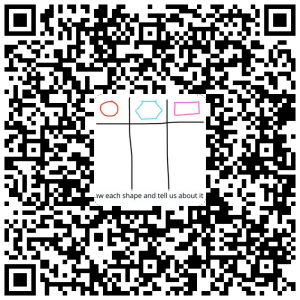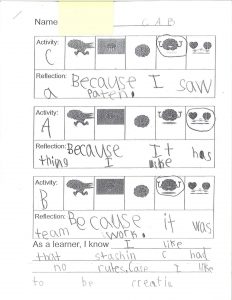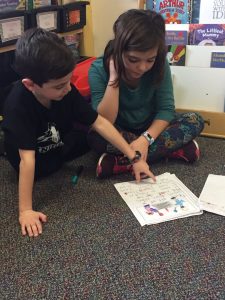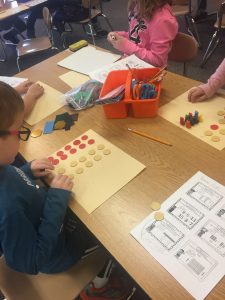A couple years ago I received a letter from a former student that really hit home. I vaguely remembered this student (yes, I needed to pull out my old class photos just to remember the face) but for some reason he wanted me to know that I had a major impact on his life. This is the gist of what was shared:
“You asked me how I was doing almost EVERY day during a time when I was struggling at home. I wasn’t quite sure how you knew I was struggling, but I was. I was not getting along with my family and life for that matter……”
I was shocked and definitely a little teary eyed. I began to think more and more about my role in this student’s life. I tried to remember why I asked him this daily. Was I really that concerned? Did I really have an impact like he had written? Did I treat all my students with this same concern? Do our students need us to know what is happening in their life? Was I just trying to get to know him? We have a major impact on our students’ lives. How do we make this impact? We talk to them and really get to know who they are.

The book When They Already Know It by Mark Weichel, Blane McCann, and Tami Williams devotes a full chapter focusing on how to get to know the learners in your room. You may have already heard of this book as it was mentioned as a book club option last week. The book takes a look at how to extend and personalize student learning. As a district we have taken the initial steps of knowing our learners with the use of the learner profile. It is a start for staff to get to know their students like never before.
What does it really mean to know your learner? Weichel, McCann, and Williams define it as “being able to identify, describe, nurture, and respond to their intellectual, social, and emotional characteristics.” When we get to know our learners we get to know what makes them tick, what excites and frustrates them, what makes them succeed, and so much more. The more that educators know about their students the more effective they can be in the classroom which allows them to guide their students and lead them to grow in their learning.
The district’s current vision is on the personalization of learning for our students. The importance of pursuing personalization in our schools cannot be effective unless we absolutely know our learners. We are in the midst of learning about our students through the use of the Learner Profile. This tool allows each student to reflect on different dimensions of who they are as a learner and create clarity on how they can advocate for his/her learning to his/her teacher. What are their interests, needs, frustrations, obstacles, and anything else that makes their learning easier? The Learner Profile allows us a better understanding of each one of our students. Weichel, McCann, and Williams reference some contributing factors in a Student’s Academic Profile that align directly to Kaneland’s Learner Profile.
Contributing Factors in a Student’s Academic Profile:
Strengths It is important that we focus on a student’s strengths and any talents they can utilize during their learning. So many times, specifically data driven meetings, our focus is on their deficits. It’s time we find the good in our students and see where that can take them. We do not have ‘average’ students- we have students that might be average in some areas, but each student has a strength that can raise them higher than others in the learning process.
Curiosities What are your students curious about? Have you ever asked them? Could you possibly share the same curiosities? By knowing what a student is curious about you can open their learning to a whole new world. Curious students tend to want much more than what is on the surface. These curiosities can grow into much bigger learning opportunities, not only for them but you as well. Do you often wonder about that?
Interests Curiosities and interests are very similar. With both you can connect your curriculum and a student’s interest and expand on extended learning. The key in finding out about interests and curiosities is to talk to your students. (See a trend forming?) Find out what drives your students, what they like to do outside of school? Can you connect your learning to their interests? The connection to students’ interests can lead you to a deeper understanding. How do their interests drive their learning?
Learning Styles Do your students require step-by-step instructions? Do they learn more when they are in control of their own learning? Do they only need guidance at the beginning of their learning? Do they work better in small groups? Large groups? Individually? Are they a leader? Follower? Tailoring each students learning to how they learn best is essential for success. The key element is to find out how each student learns best.
Motivators Do your students need a teacher to praise them 24/7 or only when they need it? Does recognition drive your student? What about offering perks? Is their motivation personal? In many instances praising a student over and over again not only loses its luster, but can also tear a child apart. Other students that don’t receive the constant praising could somehow begin to resent those that receive praise all the time. What are your motivators? Is it possible your students could have the same motivator; or, is that what you think?
Energy Sources We are in a world where we cross paths with both extroverts and introverts on a regular basis. An extrovert will get their energy from others and will also produce energy. They like to be involved and definitely like to lead the charge! Many times they will voice their opinions with the confidence that they are right. Introverts on the other hand get their energy from themselves. They usually like to work alone or in very small groups, with people they know. They are constantly reflecting so they don’t regret their actions. As a teacher it is important to know where your students fall in this area. Making them perform a task that they are not comfortable with can sometimes harm an individual’s learning.
Many of these contributing factors are located in our students’ Learner Profile. Are we accessing this information to better improve our teaching? Are we using it to get the most out of our students? Do we continue to reflect on our own Learner Profile? Are we just using it to fulfill district implementation? It is important that we ask ourselves these questions so that we are giving our students the best learning they need. If you know your students’ profile, you definitely know your student!
A Final Thought
As you can tell, knowing your students has many benefits. Looking back on my own experience, I’m glad I asked that student how he was doing every single day. At the time I was just trying to engage a shy/quiet student in a conversation. I don’t recollect ever sensing his true feelings, but either way I am glad that I can say “I was able to be the lifeline for a student that was in need.” These students are our kids. Yes, we should invest our time in getting to know everything about them that we possibly can. If you don’t feel that you’ve had an impact, give it some time. Someday you will know when you’ve touched the life of someone. Just get to know your learners!
Source:
McCann, B., Weichel, M., Williams, T., 2018, When They Already Know It. Bloomington, IN, Solution Tree Press





